Welcome to My Crazy Life: Poems by Joshua Seigal
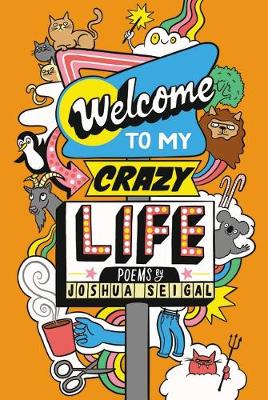
By Author / Illustrator
Joshua Seigal, Chris Piascik
Genre
Poetry
Age range(s)
7+
Publisher
Bloomsbury Publishing PLC
ISBN
9781472972729
Format
Paperback / softback
Published
23-01-2020
Synopsis
Packed full of silly, funny, or downright hilarious poems (with some serious ones mixed in), this new collection by Joshua Seigal (winner of the Laugh Out Loud Awards) is perfect for fans of Michael Rosen. 'Joshua Seigal is definitely my new favourite poet.' (Books for Keeps)'Joshua Seigal is a rising star in the children's poetry world...' (lovereading4kids) With poems on every topic from demon cats to why you should NEVER forget your trousers, this is a must-have new collection from prize-winning poet Joshua Seigal. This book is a wonderful mix of subversive humour and brilliant insight into children's perspectives on the world. Get ready for the craziness to begin!Book Band: BrownIdeal for ages 7+
Reviews
Alison
The irony of writing a review about a 'crazy life' in the surreal, crazy world we are currently living in does not escape me! Joshua Seigal's latest book, Welcome to my Crazy Life, is a great distraction. He has an astute feel for what make children laugh but also what make them anxious.
He welcomes the reader with an introductory poem about the crazy life of a poet who wanders 'lonely over vales / while I hum a tune. / Despite his propensity for bumping into things when his mind's elsewhere and his worry about his job not being worthwhile, he concludes with the thought that 'my words shape humanity'. This is just one of several poems about poetry in the collection. The World's Worst Poet' (p.3) is a clever and funny take on different poetic forms as Seigal makes unsuccessful attempts at a limerick, a haiku, acrostic ' 'A haiku is what / he then attempted to do. / But that was no good either./'. 'Eye like to Rhyme' (p.26) plays with words that have the same graphemes but are sounded differently :'I tried to write a poem / one fine evening whilst at home. / I tried to do it properly / but the rhymes just wouldn't come. /'. This offers a rich context for children to scrutinise these graphic anomalies.
There are some lovely poems about reading. Chris Piascik depicts a bespectacled mouse peeking out from the pages of a downturned book to accompany 'How to read a book' (p.5). Shaped around an introductory adverb, each verse offers different aspects of reading: 'Secretly, / under your desk / during a maths lesson/'; 'Lovingly, / huddled in the warm cocoon / of family//'. Then there's 'I Like Reading' (p.19) which celebrates the many different forms reading can take: 'Menus, almanacks and journals; / sometimes even books from school. / Big fat chunks or little kernels - / reading is my rocket fuel.//' There is rich scope for a classroom display here with the poem at its centre surrounded by some of the different texts featured in the poem. Children could make their own additions to the display.
Children will love the shape poem - 'Catastrophic Carnivorous Creature' (p.13). A wonderful spiky ferocious 'allitigator' sprawls across the page filled with alliterative phrases: 'tremendously terrible teeth' and 'judderingly jagged jaws'!
These are anxious times so the thread of poems that address children's fears are opportune. A poem like ZZZZZZZZAP! (p.7) gives the chance to zap away fears: 'I'd zap away the angry words / between my mum and dad. / I'd zap away the arguments / that make me feel sad./'. The calligram effect of the print zapping across the page adds powerful oomph to the poem. Then a pair of personification poems sit opposite each other: 'Anger' and 'Laughter' (p.10-11). 'Anxiety' (p.67) addresses the physical symptoms of anxiety whilst 'Dealing with Fear' (p.68) suggests you 'Make friends with her': 'Make a place on your fridge / as you would / for a three-year-old's/ finger painting. / She's little. / She has a lot to learn. / Why don't you teach her?//.
There are so many opportunities here for children to develop their own poetry writing and a final section 'Get Writing' has some great suggestions of how particular poems might be used. His homage to Kit Wright's 'The Magic Box' takes the form of 'The Nasty Box' (p.36) and Seigal suggests more box ideas (scary, beautiful, memory) which could form the basis of the children's work.
The book ends on an incredibly poignant note: 'Barney' (73) brought tears to my eyes. To conjure up the last loving moments of a dog's life so movingly is skillful indeed, and a reminder of how a poet's words do indeed 'shape humanity'.
96 pages / Ages 8+ / Reviewed by Alison Kelly, consultant
Suggested Reading Age 7+
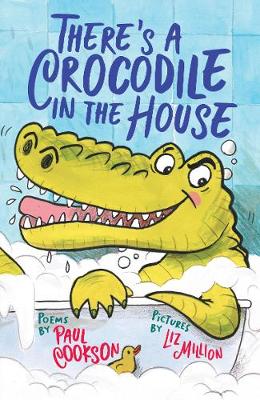 There's a Crocodile in the House
There's a Crocodile in the House
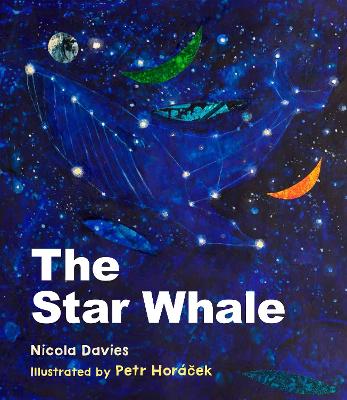 The Star Whale
The Star Whale
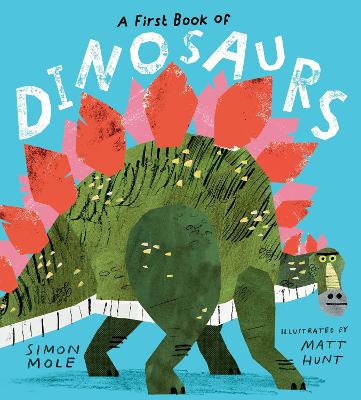 A First Book of Dinosaurs
A First Book of Dinosaurs
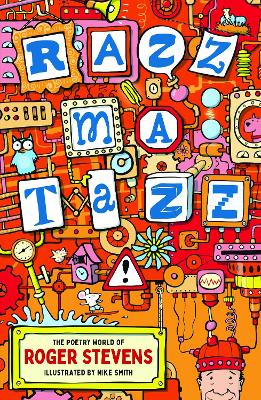 Razzmatazz!: The Poetry World of Roger Stevens
Razzmatazz!: The Poetry World of Roger Stevens
